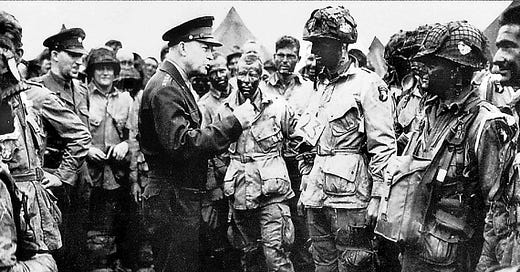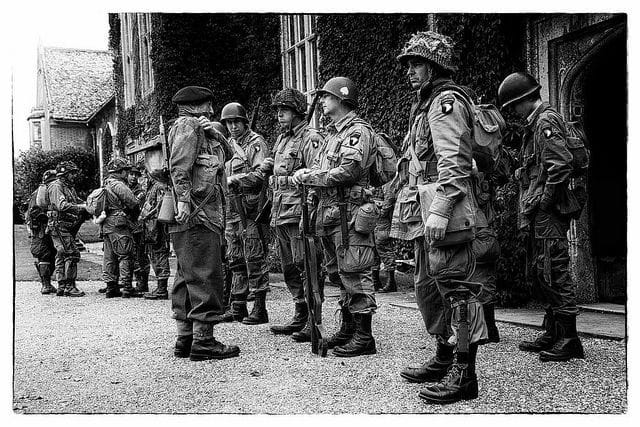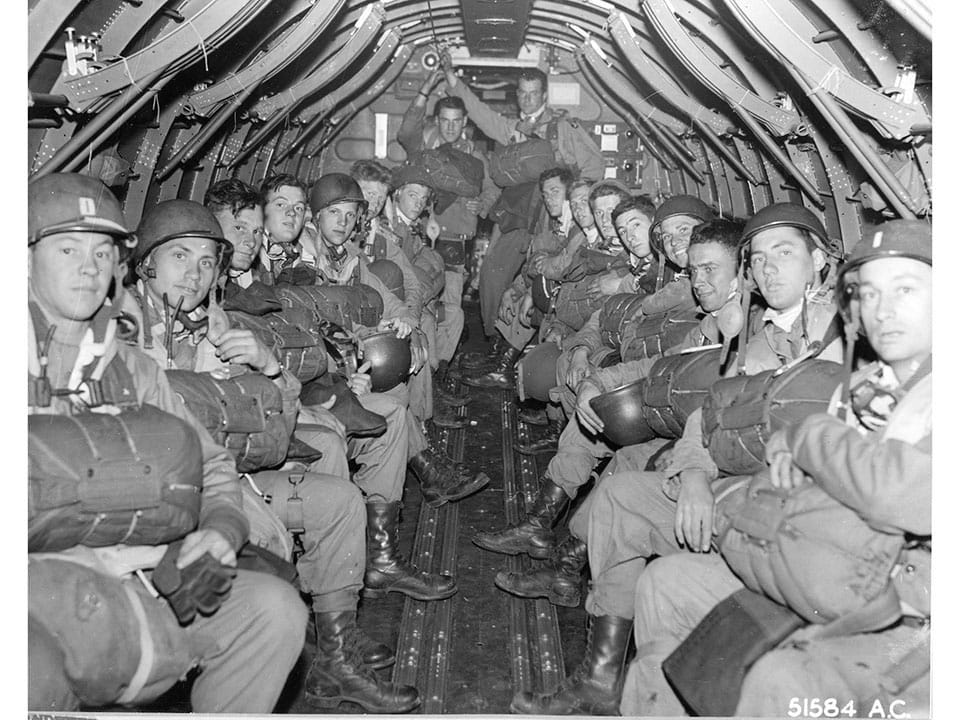The Beginning of the 101st Airborne Division
The History of the Screaming Eagles in World War II

The 101st Airborne Division “Screaming Eagles” was originally organized in November 1918, establishing their headquarters at Camp Shelby, Mississippi on November 2, 1918. As World War I ended just nine days later, the division was demobilized on December 11, 1918.
In June of 1921, the 101st Airborne was reconstituted as an Organized Reserve unit. The division was established that September in Milwaukee, Wisconsin, with reservists, most of whom were individually called into federal service after the outbreak of the war. The reserve status was disbanded August 15, 1942, and concurrently the division was reconstituted in the Army of the United States as the 101st Airborne Division.
On July 30, 1942, the Army Ground Forces ordered the activation of two airborne divisions no later than August 15, 1942.
The 82nd Airborne Division, an Organized Reserve Division who had been activated into active military service in March 1942, was ordered to provide cadre to the 101st Airborne Division, who was also selected for the project.
The airborne capabilities were to be supported by two Glider Infantry Regiments (GIRs), the 327th and 401st, along with one Parachute Infantry Regiment (PIR), the 502nd. Even though the 101st Airborne Division was activated at Camp Claiborne, the 502nd PIR was stationed at Fort Benning, Georgia.
The first commander of the Screaming Eagles was the recently promoted Major General William C. Lee. In his maiden speech, based on a General Order (Number 5), he spoke these famous and prescient words on August 19, 1942:
“The 101st Airborne Division has no history, but it has a rendezvous with destiny.”
In October 1942, the division was moved to Fort Bragg, North Carolina, and was finally joined by the 502nd PIR to begin training under the Airborne Command. By the spring of 1943, the 101st Airborne was ready to face its first test in local maneuvers.
Immediately following these maneuvers, the 101st left to take part in the Tennessee maneuvers, a larger scale operation. Preceding the exercise, on June 10, 1943, the 506th Parachute Infantry was officially attached to the 101st Airborne Division. The Screaming Eagle's performance throughout the maneuvers was impressive as they demonstrated the capabilities of U.S. Airborne Forces.
The division would return to Fort Bragg to continue training and perform various airborne demonstrations for visiting officials until mid-August when it finally received orders for transfer overseas. Arriving in England, the 101st Airborne was quartered in Wiltshire and Berkshire, where it continued to train and prepare for the impending invasion of Europe.
In January 1944, the 101st Airborne Division received its third Parachute Infantry Regiment, the 501st PIR.
On February 5, General Lee, who had championed the airborne cause from the beginning, suffered a heart attack. Although he had brought the division from its initial organization through training for the fight in Europe, General Lee was not to be part of the Screaming Eagles baptism of fire. He was relieved of his command and returned to the United States. Brigadier General Maxwell D. Taylor, former commander of the 82nd Airborne Division Artillery, assumed command of the 101st Airborne on March 14, 1944.
The division underwent another organizational change that month when the 2nd Battalion, 401st Glider Infantry Regiment, was permanently transferred to the 82nd Airborne Division. The 1st Battalion was attached to the 327th Glider Infantry Regiment to operate under that regiment as a third battalion. The 1st Battalion, 401st GIR, was made an official element of the 327th GIR in April 1945.
Besides the Parachute and Glider Infantry Units, the 101st Airborne Division consisted of the following:
326th Airborne Engineer Battalion (AEB)
81st Airborne Anti-Aircraft Battalion
321st Glider Field Artillery Battalion (GFAB)
907th GFAB
377th Parachute Field Artillery Battalion (PFAB)
463rd PFAB, the 326th Medical Company
426th Quarter Master Company (QM Co)
Plus other headquarters (HQ) personnel, Military Police (MP), and assorted supply and support troops.
While training in England in preparation for war, the 101st Airborne participated in three formal exercises: BEAVER, TIGER, and EAGLE.
During Operation BEAVER at Slapton Sands on the Devonshire coast, elements of the division jumped from trucks instead of planes with the mission of capturing the causeway bridges that crossed the estuary behind the beach. The division performed much the same mission during the second exercise, Operation TIGER.
Operation EAGLE, held during the second week of May, was the division’s dress rehearsal for its role in the coming Normandy invasion. The 101st Airborne Division, this time jumping from actual planes, was once again assigned to capture the causeways leading away from a simulated beach.
Although a misunderstanding caused most of the division to jump at the wrong coordinates, the mission was accomplished and the exercise was considered a success. The division then returned to its stations to continue their final preparations for the coming battles on the continent.
Sources:
Rendezvous with Destiny: A History of the 101st Airborne Division (Leonard Rapport & Arthur Northwood)
101st Airborne The Screaming Eagles in World War II (Mark Bando)
Screaming Eagle Gliders; The 321st Glider Field Artillery Battalion of the 101st Airborne Division in World War II (By: G.J. Dettore)







